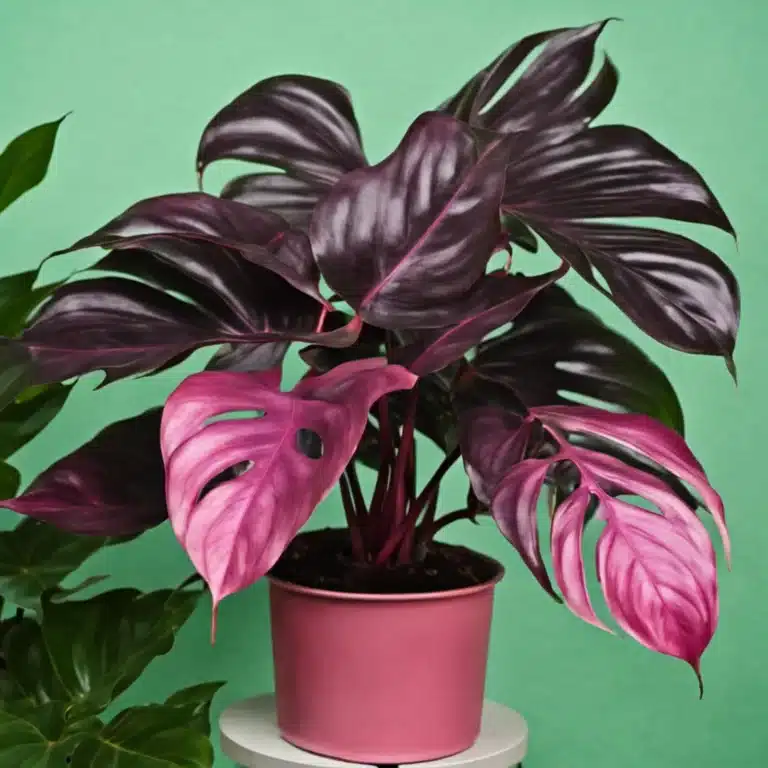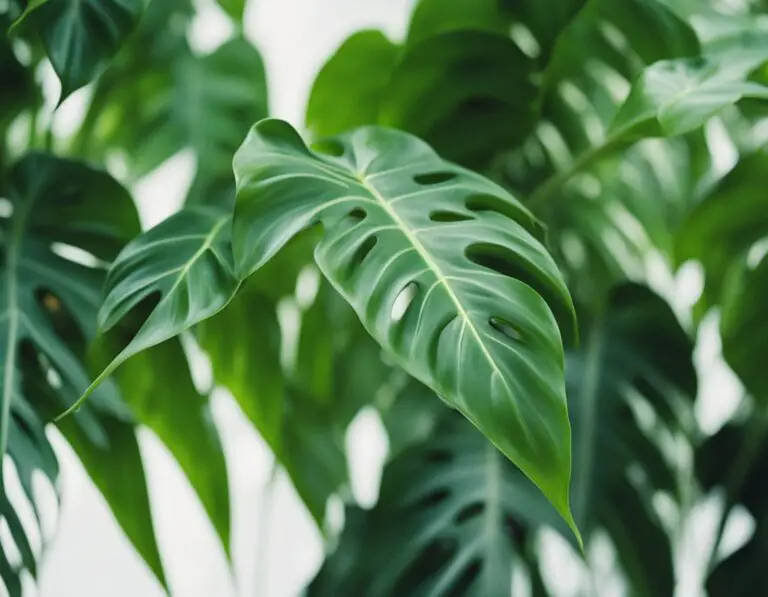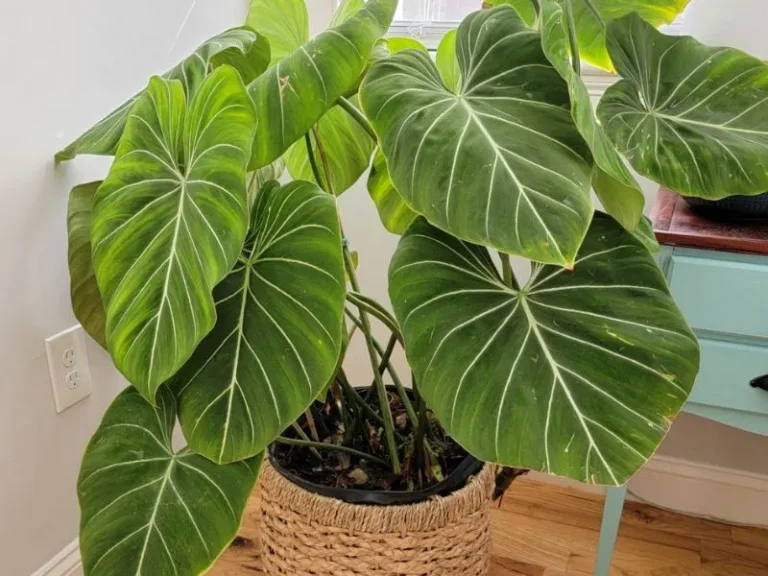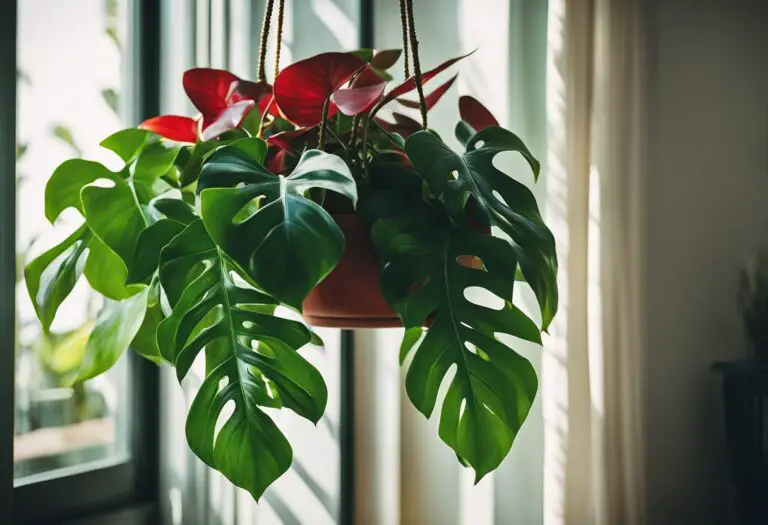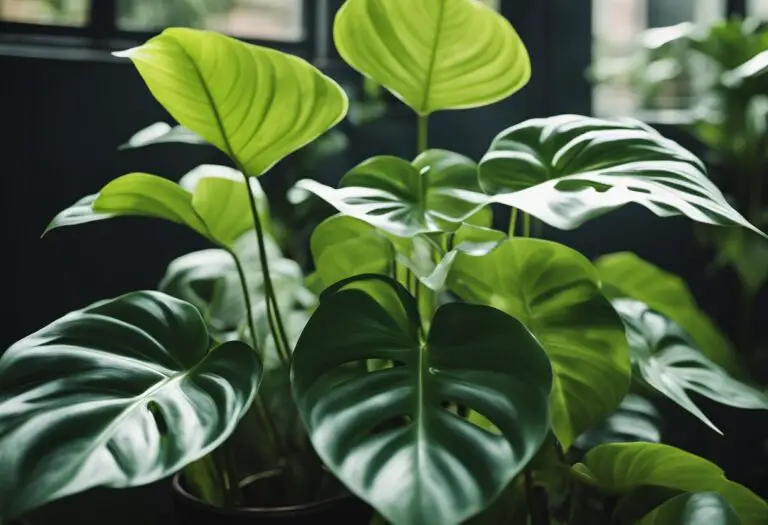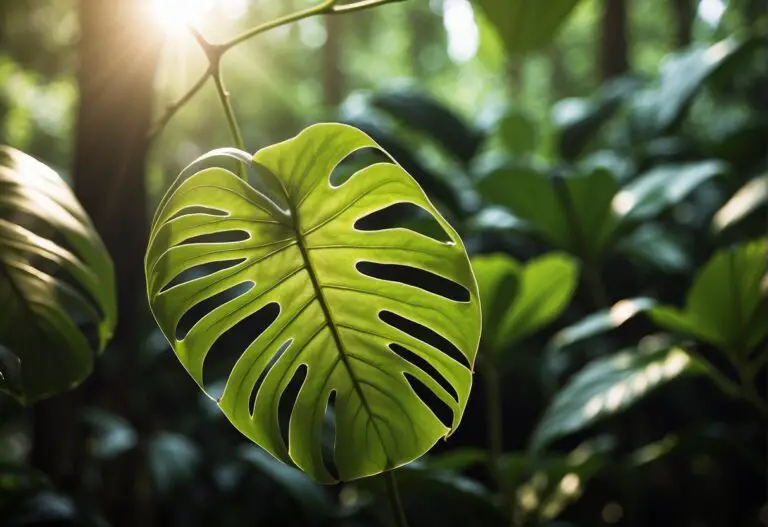Philodendron Pastazanum: A Guide to Care and Cultivation
Philodendron Pastazanum is a rare and highly sought-after plant species that belongs to the Araceae family. This plant is native to Ecuador and Peru, where it grows as an indigenous endemic species. It was discovered in the province of Pastaza in Ecuador in the mid-70s, after which it got its name.

If you’re a plant enthusiast, you’ll be happy to know that Philodendron Pastazanum is a beautiful plant that is easy to care for and propagate.
It has large heart-shaped leaves and a creeping growth habit, making it an excellent choice for indoor or outdoor spaces. In this article, we’ll give you a step-by-step guide on how to grow, care for, and propagate this rare plant species.
Key Takeaways
- Philodendron Pastazanum is a rare and highly sought-after plant species that belongs to the Araceae family.
- This plant is easy to care for and propagate, making it an excellent choice for indoor or outdoor spaces.
- In this article, we’ll give you a step-by-step guide on how to grow, care for, and propagate this rare plant species.
Understanding Philodendron Pastazanum
Philodendron Pastazanum is a rare and highly sought-after species of Philodendron. It is native to Ecuador and Peru, where it grows as an indigenous endemic species. The plant was discovered in the province of Pastaza in Ecuador in the mid-70s, after which it got its name.
Philodendron Pastazanum is a crawler, growing petioles vertically from the stem and carrying eye-catching leaves. The leaves are heart-shaped, glossy, ribbed, and dark green, making it one of the most sought-after plants. The plant is easy to care for and is perfect for beginners.
Philodendron Pastazanum is a great addition to any indoor or outdoor ecosystem. It adds aesthetic beauty to your space and is also known for its air-purifying qualities.
The plant can grow up to 3 feet tall and 3 feet wide, making it a perfect statement piece for any room. With proper care, Philodendron Pastazanum can live for many years, making it a great investment for any plant lover.
Caring for Your Philodendron Pastazanum

Philodendron Pastazanum is a beautiful and easy-to-care-for plant that can bring life and color to any room. To ensure your plant thrives, you need to provide it with the right conditions.
This section will guide you through the optimal lighting, watering requirements, soil and fertilization, temperature, and humidity for your Philodendron Pastazanum.
Optimal Lighting
Philodendron Pastazanum thrives in bright, indirect light. Direct sunlight can scorch the leaves, while too little light can cause the plant to become leggy and weak. Place your plant near a window that receives bright, indirect light, or use artificial light if you don’t have access to natural light.
Watering Requirements
Philodendron Pastazanum prefers to be kept evenly moist, but not waterlogged. Overwatering can cause root rot, while underwatering can cause the leaves to wilt and dry out.
Water your plant when the top inch of soil feels dry to the touch. When watering, make sure to water thoroughly, allowing the water to drain out of the bottom of the pot.
Soil and Fertilization
Philodendron Pastazanum prefers well-draining soil that is rich in organic matter. A mix of peat moss, perlite, and vermiculite is ideal. Fertilize your plant every two to three months during the growing season with a balanced fertilizer. Be careful not to overfertilize, as this can cause the leaves to burn.
Temperature and Humidity
Philodendron Pastazanum thrives in temperatures between 65°F and 80°F. Keep your plant away from drafts and sudden temperature changes. Philodendron Pastazanum also prefers high humidity.
You can increase humidity by misting your plant regularly or placing it on a tray filled with pebbles and water.
With proper care, your Philodendron Pastazanum will thrive and bring beauty to your home.
Propagation Techniques

If you want to propagate your Philodendron Pastazanum, you have several options to choose from. One of the easiest methods is stem cuttings. To do this, simply take a cutting from the stem of your plant that has at least two nodes. Make sure to cut just below the node and remove any leaves from the bottom half of the cutting. Place the cutting in water or soil, and keep it moist until roots develop.
Another method is propagation through basal branches. This involves taking a cutting from the base of the plant where the stem meets the soil. Make sure to include a few leaves and a node on the cutting. Place the cutting in soil and keep it moist until roots develop.
Air layering is another option for propagating Philodendron Pastazanum. This method involves creating a small wound on the stem of the plant and covering it with moist sphagnum moss. Once roots develop, you can cut the stem below the new roots and plant it in soil.
No matter which method you choose, make sure to keep the new plant in a warm, humid environment with bright, indirect light. With a little patience and care, you can easily propagate your Philodendron Pastazanum and enjoy its beautiful foliage in multiple locations throughout your home.
Common Issues and Solutions
Pest Problems
Pests can be a major concern for your Philodendron Pastazanum. The most common pests that can affect your plant are spider mites, mealybugs, scale, and whiteflies.
To prevent these pests from infesting your plant, make sure to keep your plant clean and dust-free. You can also use insecticidal soap or neem oil to get rid of these pests. If the infestation is severe, you may need to use an insecticide spray.
Diseases and Disorders
Philodendron Pastazanum is generally a healthy plant, but it can be susceptible to some diseases and disorders. The most common diseases that can affect your plant are root rot and leaf spot. These diseases are caused by overwatering or poor drainage.
To prevent these diseases, make sure to water your plant only when the top inch of soil is dry and ensure that the pot has drainage holes. If your plant is affected by these diseases, remove the affected leaves and reduce watering until the plant recovers.
Leaf Maintenance
The leaves of your Philodendron Pastazanum can become dusty and dirty over time, which can affect the plant’s overall health. To keep the leaves clean, you can wipe them with a damp cloth or use a leaf shine spray.
However, be careful not to use too much leaf shine, as it can clog the plant’s pores and affect its ability to absorb light. Additionally, make sure to remove any dead or yellowing leaves to keep the plant healthy and promote new growth.
Remember to keep an eye on your Philodendron Pastazanum and address any issues as soon as they arise. With proper care and maintenance, your plant will thrive and add beauty to your home or office.
Designing With Philodendron Pastazanum
Philodendron Pastazanum is a versatile plant that can be used to enhance the beauty of any indoor or outdoor space. Here are some ideas for designing with this stunning plant:
Landscape Integration
Philodendron Pastazanum can be used to add a tropical feel to your landscape design. This plant can grow up to 4 feet tall and wide, making it a great choice for filling in large spaces.
You can also plant it in containers and place them around your patio or pool area. Philodendron Pastazanum prefers partial shade and moist, well-drained soil.
Indoor Display Ideas
Philodendron Pastazanum is a great choice for indoor display as well. Its large, heart-shaped leaves make a bold statement in any room. You can place it in a decorative pot and display it on a table or stand.
You can also hang it in a basket or mount it on a wall. Philodendron Pastazanum prefers bright, indirect light and regular watering.
Here are some tips for taking care of your Philodendron Pastazanum:
- Water your plant regularly, but do not overwater it. Allow the soil to dry out slightly between waterings.
- Fertilize your plant every month during the growing season with a balanced fertilizer.
- Prune your plant to control its size and shape. Remove any dead or yellowing leaves.
- Keep your plant away from drafts and direct sunlight.
With its striking foliage and easy care, Philodendron Pastazanum is a great choice for any design project. Try incorporating it into your next landscape or indoor display for a touch of tropical beauty.
Philodendron Pastazanum Varieties
If you’re looking for a unique and rare houseplant, Philodendron Pastazanum is a great choice. This plant is native to Ecuador and Peru and is known for its large, heart-shaped leaves. There are several varieties of Philodendron Pastazanum, each with its own unique characteristics.
One of the most popular varieties is the Philodendron Pastazanum ‘Glaucophyllum.’ This variety has leaves that are a silvery-blue color and can grow up to 3 feet long. Another popular variety is the ‘Rio Negro,’ which has dark green leaves and can grow up to 2 feet long.
If you’re looking for a smaller variety, the Philodendron Pastazanum ‘Mini’ is a great option. This variety has smaller leaves that are only a few inches long and is perfect for smaller spaces.
No matter which variety you choose, Philodendron Pastazanum is a great addition to any plant collection. With its unique leaves and easy care requirements, it’s no wonder why this plant is so sought after.
Frequently Asked Questions
How do I care for my Philodendron Pastazanum to ensure it thrives?
To ensure your Philodendron Pastazanum thrives, you need to provide it with bright, indirect light, high humidity, and well-draining soil. Water your plant when the top inch of soil is dry, and avoid overwatering.
Fertilize your plant once a month during the growing season with a balanced fertilizer.
What are the key differences between Philodendron Pastazanum and Philodendron McDowell?
The key differences between Philodendron Pastazanum and Philodendron McDowell are that the former has larger leaves with a velvety texture, while the latter has smaller, glossy leaves.
Philodendron Pastazanum also has a more upright growth habit than Philodendron McDowell, which tends to trail or climb.
Can you explain the propagation process for a Philodendron Pastazanum?
Propagation of Philodendron Pastazanum can be done through stem cuttings or air layering. For stem cuttings, take a cutting with at least two nodes and place it in water or moist soil until roots form.
For air layering, make a cut in the stem and wrap it with moist sphagnum moss, then cover it with plastic wrap until roots form.
How can I distinguish between a Philodendron Pastazanum and a Philodendron Plowmanii?
Philodendron Pastazanum has larger, velvety leaves with prominent veins, while Philodendron Plowmanii has smaller, glossy leaves with less prominent veins. Additionally, Philodendron Pastazanum has a more upright growth habit, while Philodendron Plowmanii tends to trail or climb.
What size does a mature Philodendron Pastazanum typically reach?
A mature Philodendron Pastazanum can reach up to 3-4 feet in height and 2-3 feet in width.
How does the Philodendron Pastazanum compare in rarity and price to other Philodendron varieties?
Philodendron Pastazanum is considered a rare and highly sought-after philodendron variety, which can make it more expensive than other philodendron varieties. However, prices can vary depending on availability and location.

